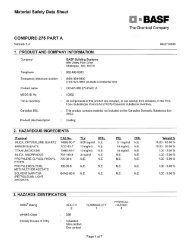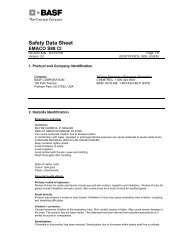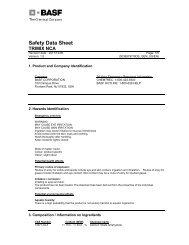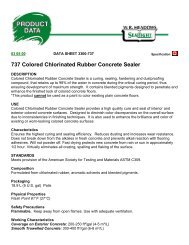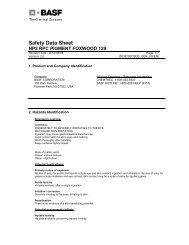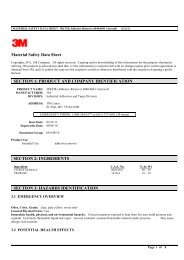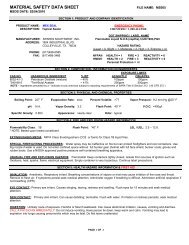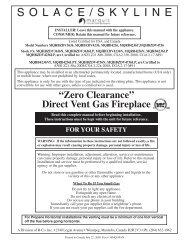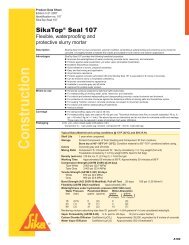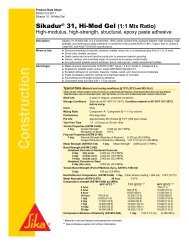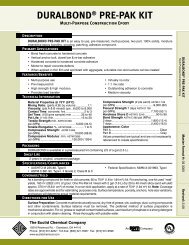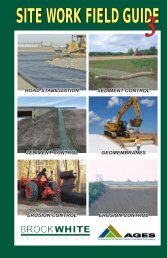Create successful ePaper yourself
Turn your PDF publications into a flip-book with our unique Google optimized e-Paper software.
General andTechnical InformationBondbreaker and Curing CompoundsBondbreakers and curing compounds are among the mostcritical materials used on a tilt-up project. These productsshould have their performance criteria carefully evaluated.The application of the curing compound on the floor slab isthe most critical step in the preparation process. The applicationshould begin immediately after the hard steel trowelingand the dissipation of the excess bleed water. A curecoat applied too late may render the slab highly permeable,leading to bondbreaker absorption and poor parting characteristics.Typically, look for the following cure characteristics:1. A well cured casting slab.2. Excellent parting characteristics of the bondbreaker.3. Good drying characteristics of the bondbreaker.4. Clean appearance of the finished panel and floor slab.5. Good compatibility with subsequent floor treatments and/orfloor coverings.6. Good compatibility with wall finishes such as paint,elastomeric coatings, sealants, adhesives, etc.There are three basic types of bondbreakers:1. Membrane forming.2. Non-membrane forming — reactive.3. Combinations of membrane forming and reactive.Since the membrane forming materials rely on crudepetroleum resins and waxes to form a water insoluble barrierbetween the freshly cast wall panel and the casting slab, theyare prone to leave residue on both the panel and the slab.Under optimum conditions of temperature and sunlight, theywill usually dissipate in approximately 90 days. Varyingenvironmental and/or application conditions may result inresidue being present much longer. Residue may discolor theconcrete and interfere with subsequent surface treatments.Reactive materials work with the excess lime available tocreate crude soaps. These soaps provide a moisture barrierto prevent the migration of the cement matrix into the castingslab.A final note: whenever there is doubt about sufficientbondbreaker on the casting slab, always apply more.It is the cheapest insurance available for a successfultilt-up job. Refer to the Dayton Superior brochure “Use andApplication of Bondbreakers” for more information.General and TechnicalInformationShop DrawingsA complete set of detailed panel drawings is required forevery tilt-up project. If the drawings are not part of the plansprepared by the engineer of record, then the panel contractorshould prepare the set and submit them to the engineer forapproval. The detailed panel drawings should contain thefollowing information:1. Panel identification.2. All pertinent dimensions.3. All physical characteristics, including weight.4. All reinforcing steel.5. Location and identification of all embedded items.6. Finishes and textures.7. Rigging and bracing information.Panel Casting LayoutThe panel contractor should consult with the erectioncontractor in the development of a good casting layout.For a smooth construction sequence, two importantcriteria must be met:1. The panels must be located for efficient casting.2. The panels must be located for safe andefficient erection.The panel layout should provide accessibility to the panelforms for the ready mix trucks and crane.Tilt-up panels should be cast as near as possible to theirfinal location in the structure. An effort should be made toplace as many side by side as possible. If a panel must be“walked” to its final position, try to keep the distance asshort as possible. “Walking” the panels should be avoided,if possible.02-0913



